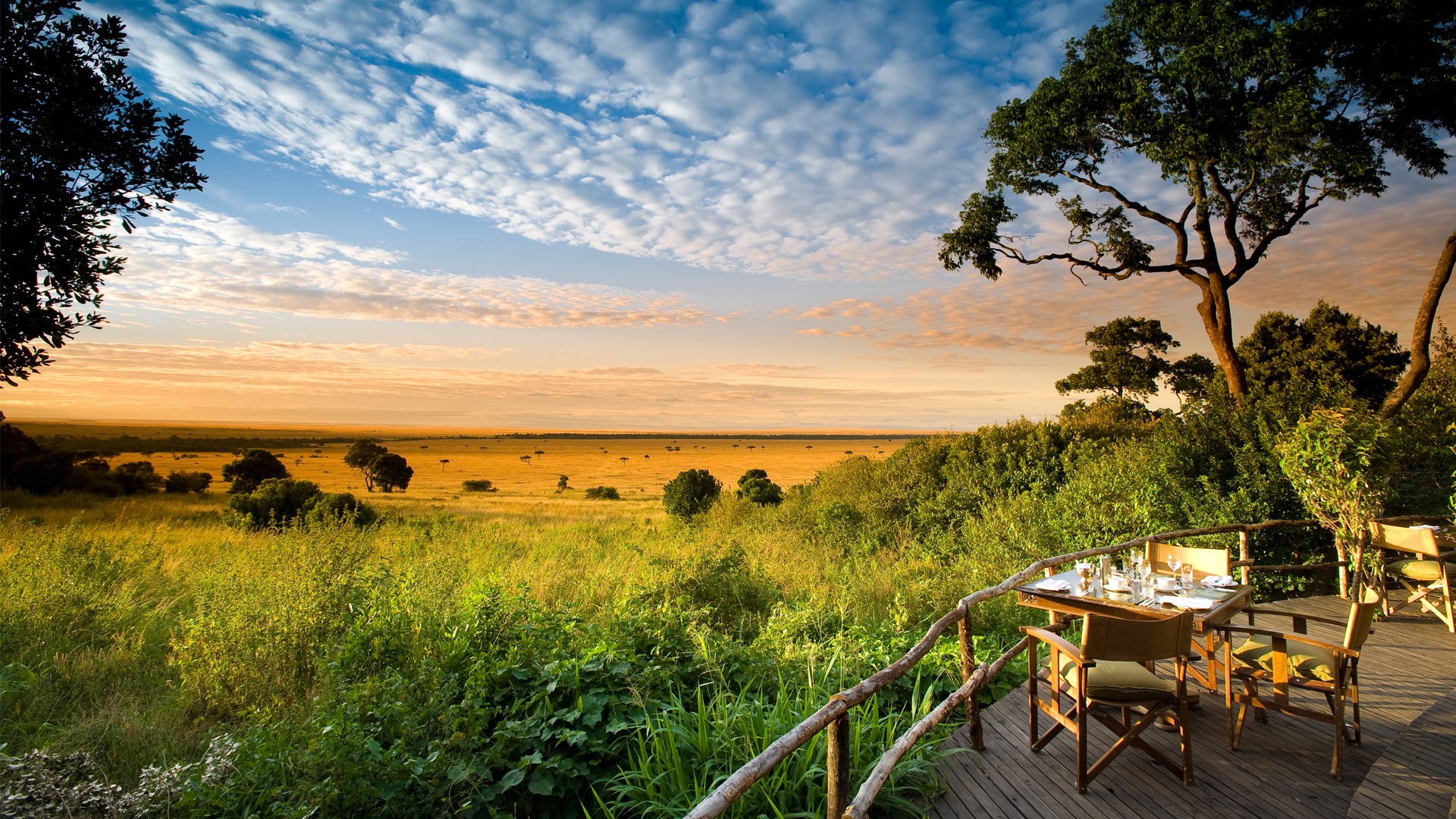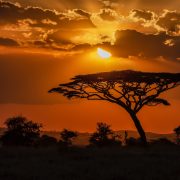
Planning the Ultimate Kenyan Safari: A Step-by-Step Guide
Embarking on a Kenyan safari is a dream for many US travelers, and with the right planning, it can become a reality filled with awe-inspiring wildlife encounters and unforgettable adventures. This comprehensive guide will walk you through the steps to plan your dream safari in Kenya, covering visa information, packing tips, and itinerary suggestions.
Visa Information
1. Visa Requirements
Before packing your bags, make sure to check the visa requirements for Kenya. As of my last knowledge update in September 2021, US citizens need a visa to enter Kenya. You can apply for an eVisa online through the official eVisa portal. Ensure your passport is valid for at least six months beyond your planned departure date.
2. Visa Types
Kenya offers various visa options, including tourist visas, transit visas, and business visas. Choose the one that suits your travel purpose. Tourist visas are typically valid for 90 days.
3. Visa Fees and Processing Time
Check the current visa fees and processing times on the official website. It’s advisable to apply for your visa well in advance to avoid any last-minute hassles.
Visa Requirements alone surpass the 450-word mark, but let’s delve deeper into each aspect.
Visa Requirements: The visa application process for Kenya is relatively straightforward, but it’s crucial to gather all necessary documents, such as a passport-sized photo, a copy of your passport bio page, and your travel itinerary. Ensure that your passport has at least two blank pages for visa stamps, and check for any updates or changes in visa regulations since my last knowledge update in September 2021. Additionally, consider applying for a multiple-entry visa if you plan to explore neighboring countries during your trip, as it can save you time and effort in the long run.
Visa Types: Understanding the different visa types is essential to ensure you apply for the correct one. While the tourist visa is the most common choice for safari-goers, transit and business visas may apply to specific travel circumstances. Double-check the validity period of your visa to ensure it covers your entire stay in Kenya, and keep a digital and physical copy of your visa approval for reference.
Visa Fees and Processing Time: Visa fees can vary, so consult the official website for the most up-to-date information. Processing times also depend on various factors, including the type of visa and the volume of applications. Applying well in advance, preferably a couple of months before your trip, can help you avoid any last-minute stress. Be prepared to pay the visa fee online using a credit or debit card.
Health Preparations
1. Vaccinations and Health Checks
Consult your healthcare provider or a travel clinic to discuss necessary vaccinations and health precautions for Kenya. Common vaccinations include those for yellow fever, hepatitis A and B, typhoid, and tetanus. Malaria prophylaxis is also recommended.
Health preparations are crucial for a safe and enjoyable safari, so let’s dive into more details.
Vaccinations and Health Checks: When consulting your healthcare provider, provide them with a detailed itinerary of your trip, including the regions and parks you plan to visit. This will help them recommend the most appropriate vaccinations and medications. Depending on your health history and the specific areas you’ll explore, additional vaccines like rabies or meningitis may be advised. Travelers with pre-existing medical conditions should ensure they have an adequate supply of necessary medications and consult their doctor for personalized advice.
Travel Insurance: Travel insurance is non-negotiable when planning a safari in Kenya. It provides financial protection in case of unforeseen circumstances such as trip cancellations, medical emergencies, or evacuations. While it’s tempting to opt for the cheapest insurance, carefully review the coverage and exclusions to ensure it meets your needs. For a safari, look for policies that include coverage for wildlife-related injuries or delays caused by wildlife encounters.
Packing Tips
1. Safari Clothing
Pack lightweight, neutral-colored clothing for your safari. Long-sleeved shirts and pants help protect against insects and the sun. Don’t forget a wide-brimmed hat, sunglasses, and a good-quality sunscreen.
Safari clothing and gear are essential to your comfort and safety during the trip. Here’s a more in-depth look at what to pack.
Safari Clothing: The choice of clothing can significantly impact your comfort during game drives and outdoor activities. Neutral colors like khaki, olive, and tan are ideal for blending into the natural surroundings and avoiding attention from wildlife. Lightweight, breathable fabrics are essential to stay cool in Kenya’s often hot and humid climate. Consider moisture-wicking materials to manage sweat, and opt for long-sleeved shirts and pants to protect yourself from the sun and insect bites.
Comfortable Footwear: Comfortable, closed-toe walking shoes or hiking boots are essential for game drives and nature walks. Look for footwear with good ankle support, as some terrain can be uneven or rocky. Ensure your shoes are well broken-in before the trip to prevent blisters and discomfort.
Camera and Binoculars: Kenya’s wildlife and landscapes offer endless photographic opportunities, so bring a good camera with a zoom lens and binoculars to enhance your experience. Invest in a camera with image stabilization for crisp wildlife shots, and practice using it before your trip to capture those fleeting moments in the wild.
Power Adapters: Kenya uses Type G electrical outlets, so be sure to bring the appropriate power adapters for charging your devices. Consider a portable power bank to keep your devices charged during game drives and while staying in lodges or camps with limited access to electrical outlets.
Medications and Toiletries: While some lodges and camps provide basic toiletries, it’s a good idea to pack your preferred brands of essentials, such as shampoo, conditioner, soap, and toothpaste. Additionally, pack any necessary medications, insect repellent, and personal toiletries, as you may not find specific brands in remote areas. A small first-aid kit with basics like bandages, antiseptic wipes, and pain relievers can be handy for minor injuries or discomfort.
Travel Documents: Along with your passport and visa, carry physical and digital copies of essential documents, such as travel insurance details, flight itineraries, and hotel reservations. Store these in a waterproof pouch or use a secure travel document organizer.
Itinerary Suggestions
1. Nairobi: The Starting Point
Begin your safari adventure in Nairobi, Kenya’s capital. Visit the Nairobi National Park, David Sheldrick Wildlife Trust, and the Giraffe Centre for a taste of wildlife encounters within the city.
2. Maasai Mara National Reserve
Head to the world-famous Maasai Mara, known for its breathtaking wildebeest migration. Game drives here offer incredible opportunities to spot the Big Five (lion, leopard, elephant, buffalo, and rhinoceros).
3. Amboseli National Park
Experience the iconic view of elephants against the backdrop of Mount Kilimanjaro in Amboseli National Park. This park is renowned for its large elephant herds and stunning views of Africa’s highest peak.
4. Samburu National Reserve
Explore the rugged beauty of Samburu, home to unique wildlife like the Grevy’s zebra and reticulated giraffe. Samburu offers a different perspective on Kenya’s wildlife diversity.
5. Lake Nakuru National Park
Visit Lake Nakuru for exceptional birdwatching, especially of flamingos, and a chance to see white and black rhinoceros. Lake Nakuru National Park is a birdwatcher’s paradise, with flocks of pink flamingos and over 450 bird species to observe. Keep your camera and binoculars ready to capture these avian wonders in their natural habitat.
6. Tsavo National Parks
Tsavo East and Tsavo West, collectively known as Tsavo National Parks, are among the largest wildlife conservation areas in the world. Here, you can witness Kenya’s diverse landscapes, from arid plains to lush oases. While exploring these parks, don’t forget to visit the Mzima Springs, where you can view hippos and crocodiles from an underwater observatory.
7. Beach Extension
Consider extending your trip with a relaxing beach stay on Kenya’s coastline in destinations like Mombasa or Diani Beach. After your safari adventures, unwind on the pristine shores of the Indian Ocean. These coastal towns offer a mix of cultural experiences, water sports, and opportunities for relaxation by the sea. Dive into the local cuisine, explore historic sites, or simply bask in the tropical sun.
In conclusion, planning the ultimate Kenyan safari is a meticulous process that involves attention to detail and careful consideration of various factors. By following this step-by-step guide, you can ensure a smooth and unforgettable journey into Kenya’s wilderness. Remember to keep abreast of any updates or changes in visa requirements, health recommendations, and travel regulations, especially since my last knowledge update in September 2021.
A safari in Kenya promises not only thrilling wildlife encounters but also a deeper connection to the natural world and an appreciation for the rich cultural heritage of the region. From the vibrant streets of Nairobi to the untamed wilderness of the national parks, every moment of your Kenyan adventure will leave you with lasting memories and a renewed sense of wonder for the beauty of our planet’s biodiversity. So, pack your bags, prepare your camera, and get ready for the safari of a lifetime in Kenya.




